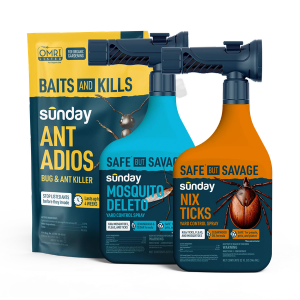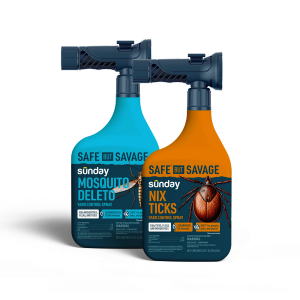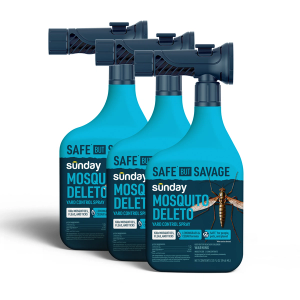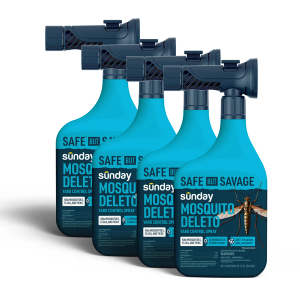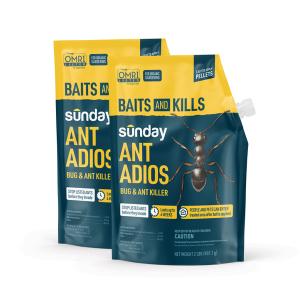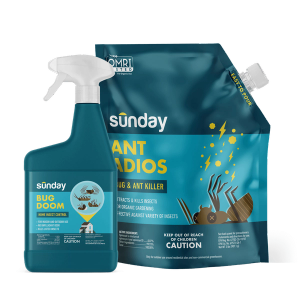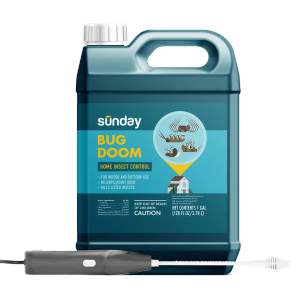Common pests in the South Central region
Although the moisture levels vary across this region, the key factor here is temperature. Pests are active for longer in the season before going dormant (or moving indoors!) once cooler weather hits in winter.
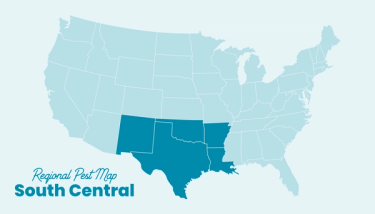
The most active and problematic pests will depend on the season:
- Spring (March-April): ants, mosquitoes, and harvester ants
- Summer (April-October): fire ants, mosquitoes, and ants
- Fall (November): fire ants, harvester ants, and crickets
- Winter (December-February): indoor nesting ants, overwintering pests, and American cockroaches
Sunday Tip:
What’s an overwintering pest? These are the bugs that may be active outdoors on warm winter days, or may find themselves indoors to escape the cold—things like boxelder bugs, stink bugs, ladybird beetles, elm leaf beetles, and kudzu bugs.
Pest prevention in the South Central region
When it comes to pests, the best offense is a good defense. Sticking to Integrated Pest Management principles will help prevent and reduce general pest issues:
- Remove or reduce habitat and food and water sources.
- Scout for pests regularly around the home and yard.
- Identify pests if one does emerge.
- Practice pest prevention and change the environment to be less pest-friendly.
- Use chemical control as a last resort.
For more specific guidance, follow these tips for preventing and managing the top pests during their active seasons in the South Central U.S.:
How to control mosquitoes
- Dump and prevent standing water around the yard, which can serve as breeding habitat for mosquitoes.
- Mow the lawn, trim trees, and prune shrubs to reduce shade- and moisture-rich mosquito habitat.
- Use Sunday’s Mosquito Deleto to treat your protected zone (patio, outdoor dining area, swingsets, etc.).
How to control ants
Outdoor ants
- Store trash, compost, and recycling bins away from the areas of the yard that you use the most, and clean up any trash or spilled food.
- Many ants actually benefit the environment by aerating soil, preying on other pests, and acting as a lesser-known pollinator. Only treat with Sunday’s Ant Adios if ants are causing damage to the lawn or landscape.
Indoor ants
- Clean spilled food, crumbs, or liquids to reduce ant food sources.
- Seal entryways to the home where you see ants coming inside.
- Treat indoor ants with Sunday’s Bug Doom if indoor ants continue to be an issue, and apply Ant Adios as an outdoor barrier to prevent ants from entering the home.
Fire ants and harvester ants
Unfortunately, there isn’t much you can do to prevent fire ants or harvester ants. If you do identify fire ants or harvester ants around the yard, avoid the area, and treat mounds as soon as possible.
Sunday Tip:
Creating a vegetation-free zone around the house can help prevent pests like ants, millipedes, centipedes, and spiders from entering your home.
South Central pest control
Deciding what practices and products to use to help you manage pests in and around your home can be tricky. Start by narrowing in on the specific pest issues you’re facing. Then, modify the environment to be less welcoming to that pest, and then determine if pest products are necessary to help prevent or manage your pest problem.
Here are some of our go-to products for the South Central U.S. that you can get shipped to your door from Sunday.
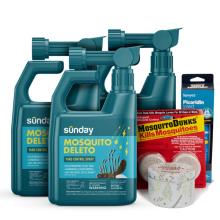
Mosquito Control Pest Plan - Medium
- Contains yard spray, personal insect repellent, mosquito dunks, citronella candle
- Mosquito Deleto kills and repels mosquitoes, ticks, and ants
- Plan includes 4-6 months of protection
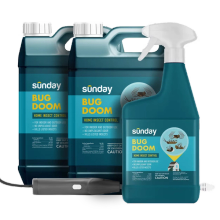
Total Home Pest Medium Protection Plan
- Protect your home against unwanted bugs indoors and out
- Kills ants, centipedes, cockroaches, crickets, spiders, and more
- Active ingredients include pyrethrin and canola oil
Resources for South Central pest management
Ants
Ants are common indoor and outdoor pests—learn more about identifying, preventing, and treating ant problems.
Mosquitoes
Use this handy guide to help you identify, prevent, and control mosquitoes in your backyard.
Natural Ways to Prevent Pests
Follow these pest prevention tips, to help keep pests from becoming a problem in the first place.
Indoor Insect ID Guide
Have a critter that worked its way inside the home, but not entirely sure what it is? Use this indoor insect ID guide to help identify your pest and get some quick tips on how to prevent and control them.
Outdoor Insect ID Guide
Got a backyard bug that’s really bugging you? Our outdoor insect ID guide can help!







